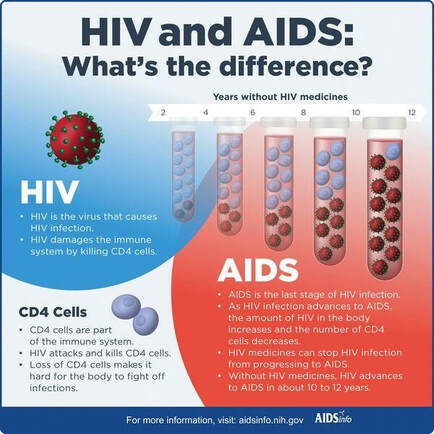 If you are reading this article, it is likely you are trying to find ways to survive with HIV. With the latest news on HIV/AIDS, surviving with HIV is becoming a reality for many people. Living with HIV can be very challenging. It is important to know what the causes of HIV are so you can take precautions to avoid contracting the virus. You can live with HIV and still have a quality life, it is just a matter of finding the right treatments. AIDS is the abbreviation for Human Immunodeficiency Virus. HIV is the virus that causes Acquired Immune Deficiency Syndrome, more commonly known as AIDS. HIV usually attacks CD4+T cells, which are part of the major T cell subsets. The major symptoms of HIV include: Symptoms of an opportunistic infection include symptoms that occur without prior knowledge of having contracted HIV. Some of the most common symptoms of an opportunistic infection include: swollen lymph nodes, persistent diarrhea, or blood in the stool, unexplained weight loss, fever, fatigue, joint or muscle pain, unexplained vaginal bleeding, rash or acne. This is not an exhaustive list and is based on the experiences of some HIV patients who have contracted AIDS. HIV patients diagnosed with opportunistic infections may experience one or more of these symptoms without ever knowing they have had a breakout during which time they have lost some or all of their immune capacity. HIV patients who have had a diagnosis of AIDS are particularly at risk of developing opportunistic infections because at this time their bodies are extremely susceptible to viruses and infections caused by bacteria. There are several medications that can help prevent the spread of HIV if taken as directed. In order to treat HIV and keep it from coming back, it is important that HIV patients do not develop opportunistic infections. However, even with early HIV prevention, it is possible for someone to contract HIV if they have had an opportunistic infection before. It is also possible for someone with HIV to develop an opportunistic infection after being treated for HIV. A person with HIV who develops an opportunistic infection is still HIV-free, but their immune system has become weak and thus HIV has become easier to infect them. If HIV is contracted by someone who was treated with AZT but then cleared of the virus, they may still be at risk of developing AIDS even with treatment. When someone contracts HIV, there are several ways to test for the disease. These include: HIV blood tests that look for antibody-based antigens; urine tests that look for HIV antigens in the urine; swabs that are used to collect a sample of infected skin; and throat tests that look for HIV RNA in the throat tissues. Because of the variations in these methods of HIV testing, it is possible for someone to have their symptoms appear on the same day as a test result from another method. The most effective HIV prevention measure is education. Education campaigns should inform people about the importance of not spreading HIV. The best way to educate people is through community organizing or HIV awareness programs. These programs aim to reduce the risks of being exposed to HIV by informing the community about HIV prevention and early detection through screening, vaccination, treatment, and early detection testing. By reducing the risks of sexually transmitted diseases, HIV prevents the transmission of other sexually transmitted diseases to other partners. For instance, in rural communities in Africa where communities are separated by distance, it is not uncommon for sexually transmitted diseases to spread between people living in the same community. Because of this, it is important to identify people who may have HIV infection and begin treatment immediately. In developed countries, there are many STD clinics that can assist individuals with HIV infection. However, there are no clinics in most of the developing countries where HIV prevalence is very high. Unfortunately, HIV infection does not only affect people living in the United States, Canada, Western Europe, and Japan. In some developing countries, HIV prevalence has risen dramatically within the last twenty years. Because the HIV infection does not show symptoms, people infected with the virus may go untreated for years, even decades. Early diagnosis and prompt treatment are the only way to prevent the transmission of HIV. Comments are closed.
|
Archives
July 2024
AuthorSteve Schafer is the founder of TheEulogyWriters and the author of hundreds of heartfelt, wonderful eulogies. He lives in Texas and has been writing eulogies for well over thirty years. The articles in this blog are designed to help people through the process of losing loved ones and exploring issues in the aging process. |
|
The Eulogy Writers
4092 Old Dominion Dr. West Bloomfield, MI 48323 |
Writers: Steve Schafer, Ralph DiBiasio-Snyder, Abi Galeas, Miriam Hill
Steve's Personal Cell Phone: (734) 846-3072 Our email address is: [email protected] |